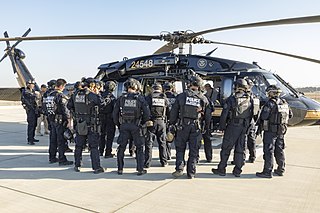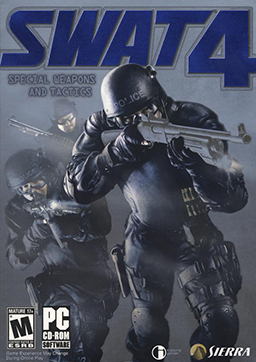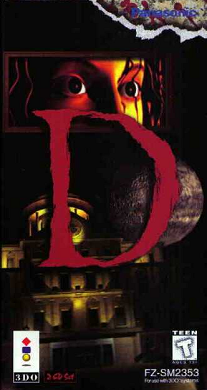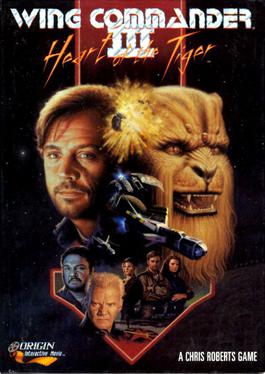Sierra Entertainment, Inc. was an American video game developer and publisher founded in 1979 by Ken and Roberta Williams. The company is known for pioneering the graphic adventure game genre, including the first such game, Mystery House. It is known for its graphical adventure game series King's Quest, Space Quest, Police Quest, Gabriel Knight, Leisure Suit Larry, and Quest for Glory, and as the original publisher of Valve's Half-Life series.

In the United States, a SWAT team is a generic term for a police tactical unit.

King's Quest is a graphic adventure game series, released between 1980 and 2016 and created by the American software company Sierra Entertainment. It is widely considered a classic series from the golden era of adventure games. Following the success of its first installments, the series was primarily responsible for building the reputation of Sierra. Roberta Williams, co-founder and former co-owner of Sierra, designed all of the King's Quest games until the series' reboot in 2015.
Police Quest is a series of police simulation video games produced and published by Sierra On-Line between 1987 and 1998. The first five were adventure simulation games, the first three of which were designed by former police officer Jim Walls. The fourth to sixth titles were designed by former LAPD Chief Daryl F. Gates. Both SWAT and the real-time tactics game SWAT 2 still carried the Police Quest name and were numbered V and VI in the series, respectively, although subsequent titles in the series would drop the Police Quest title altogether and were rebranded as SWAT.
Full-motion video (FMV) is a video game narration technique that relies upon pre-recorded video files to display action in the game. While many games feature FMVs as a way to present information during cutscenes, games that are primarily presented through FMVs are referred to as full-motion video games or interactive movies.

SWAT 3: Close Quarters Battle is a 1999 tactical first-person shooter video game developed by Sierra Northwest and published by Sierra Entertainment exclusively for Microsoft Windows. It is the seventh installment of the Police Quest series and the third installment in the SWAT subseries. SWAT 3 follows the Los Angeles Police Department (LAPD) Metropolitan Division SWAT team as they combat a wave of violent crime and terrorism in Los Angeles in the lead-up to a nuclear disarmament treaty signing.

Jim Walls is an American video game designer. He is notable for having designed the successful Police Quest series of adventure games for Sierra On-Line.

King's Quest: Quest for the Crown is an adventure game developed by Sierra On-Line and published originally for the IBM PCjr in 1984 and later for several other systems between 1984 and 1989. The game was originally titled King's Quest; the subtitle was added to the games box art in the 1987 re-release, but did not appear in the game.

SWAT 4 is a 2005 tactical first-person shooter video game developed by Irrational Games and published by Sierra Entertainment exclusively for Microsoft Windows. It is the ninth installment in the Police Quest series and the fourth installment in the SWAT subseries. In SWAT 4, the player commands a police SWAT team in the city of Fairview, New York. Unlike its predecessor, SWAT 3: Close Quarters Battle, SWAT 4 does not have an overarching plot. Instead, gameplay takes place over a series of unconnected deployments of the player's SWAT team, as they are sent to apprehend criminals, terrorists, gangs, and cults in and around Fairview.

D is a horror-themed interactive movie and adventure game developed by Warp and directed by Kenji Eno. It was first published by Panasonic for the 3DO Interactive Multiplayer in 1995, later being ported to the Sega Saturn, PlayStation, and MS-DOS. The story follows Laura Harris as she goes to investigate a hospital after learning her father went on a mass murdering spree and barricaded himself inside. The hospital morphs into a castle upon her arrival, which she must explore to find her father. The player controls Laura through computer generated full-motion video (FMV) sequences, and must complete the game within two hours without a save or pause function.

Crusader: No Regret is an isometric action game developed by Origin Systems and published by Electronic Arts in 1996. Nominally a sequel to 1995's Crusader: No Remorse, it is considered both by critics and by the game director more akin to a stand-alone expansion pack. Mechanically similar to No Remorse, it features new levels, enemies and weapons.

Police Quest: Open Season is a 1993 police procedural point-and-click adventure video game developed and published by Sierra On-Line. It is the fourth installment in the Police Quest series. Departing from the fictional setting of Lytton, California from the first three installments, Open Season follows police detective John Carey as he investigates a series of brutal murders in Los Angeles.

Police Quest: SWAT 2 (stylized as SWAT2) is a 1998 real-time tactics video game developed by Yosemite Entertainment and published by Sierra FX (both studios of Sierra On-Line) exclusively for Microsoft Windows. It is the sixth installment in the Police Quest series and the second installment in the SWAT subseries. The game follows the Los Angeles Police Department (LAPD) Metropolitan Division SWAT team as they clash with a domestic terrorist militia launching attacks across Los Angeles.

Wing Commander III: Heart of the Tiger is the third main game in Chris Roberts' Wing Commander science fiction space combat simulation video game series, developed and released by Origin Systems in December 1994. It was a departure from previous games in the series in that it uses extensive live action full-motion video to add an interactive movie-style presentation to the space combat gameplay, emphasized by its advertising slogan, "Don't watch the game, play the movie!". The game's more than two hours of video featured a number of prominent movie stars including Mark Hamill as Colonel Christopher "Maverick" Blair, Malcolm McDowell as Admiral Tolwyn, John Rhys-Davies as James "Paladin" Taggart and Thrakhath nar Kiranka, and Tom Wilson as Todd "Maniac" Marshall.

Police Quest II: The Vengeance is a 1988 police procedural adventure video game developed and published by Jim Walls and Sierra On-Line. It is the second installment in the Police Quest series. The game continues the story of police officer Sonny Bonds as he attempts to apprehend an escaped convict.

Police Quest: In Pursuit of the Death Angel is a 1987 police procedural adventure video game developed and published by Jim Walls and Sierra On-Line. Police Quest follows police officer Sonny Bonds as he investigates a drug cartel in the town of Lytton, California.

Police Quest III: The Kindred is a 1991 police procedural point-and-click adventure video game developed and published by Jim Walls and Sierra On-Line. It is the third installment in the Police Quest series. The game finishes the story of police officer Sonny Bonds, who seeks revenge after his wife is attacked by an unknown assailant.

Metropolitan Division, commonly referred to as Metro Division or just Metro, is an elite division of the Los Angeles Police Department (LAPD) under its Special Operations Group. Metropolitan Division is responsible for managing the LAPD's specialized crime suppression, K-9, mounted, and SWAT units, named "platoons".

SWAT: Global Strike Team is a 2003 tactical shooter video game developed by Argonaut Games and published by Vivendi Universal Games for the PlayStation 2 and Xbox. It featured a new game engine developed by Argonaut developed to push the lighting capabilities of the Xbox and was the first SWAT game to ship on console systems. The game was inspired by the strategic elements of SWAT 3 with the instantly accessible arcade action of the Virtua Cop series.
Ready or Not is a 2023 tactical first-person shooter video game developed and published by Ireland-based VOID Interactive and released for Microsoft Windows. Ready or Not follows the operations of a police SWAT team in the fictional American city of Los Sueños in the midst of a violent crime wave.
















